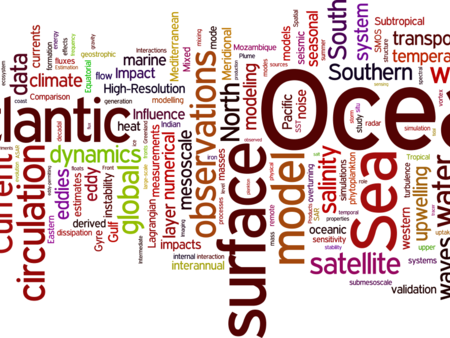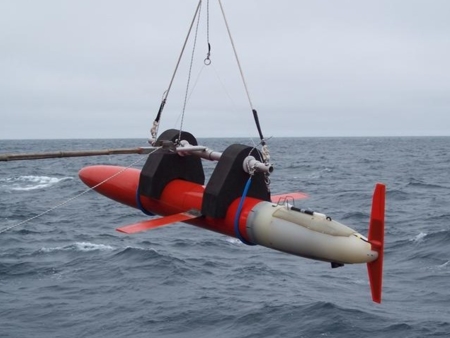Dava Amrina
Supervisors : Christophe Maes, Lisa Weiss
Funding: Ambassade de France en Indonésie via Campus France
Start Date : 01/10/2023
My thesis focused on the distribution of particle debris in the South East Asia seas region. The dispersion of marine debris (MD) in South East Asian (SEA) seas is influenced by various physical mechanisms, including ocean currents and intake from the rivers. Based on previous research, Jambeck et al. (2015) have published a comprehensive finding of countries weaknesses in managing the trash from terrestrial ecosystems, which includes Indonesia as the second-largest waste producer in the world of mismanaged plastic waste into the oceans. However, Purba et al. (2021) stated that Indonesia Seas received trash from two sources. First, from the activities of terrestrial origin, which deliver trash to the rivers, and second from other countries, especially those close to the Indonesian Seas. This is also in accordance with the results of research conducted by Dobler et al. (2022) and Nguyen (2023) which explains that the results of pollutant distribution are also influenced by various factors such as strong seasonal signals and river discharges. Both simulations reveal most MD spread out widely and ends up stranded in the beach.
For further investigate how marine debris disperses into the seas of Southeast Asia, I will conduct research based on the analysis and simulation of marine debris using the Lagrangian method, with pollutant sources from various rivers not only in Indonesia but also from rivers in several regions outside of Indonesia. I used oceanic currents SYMPHONIE product for South East Asia configuration covers the South East Asia region with regular grid of 5 km horizontal resolution and 60 vertical levels in the deepest area. The simulations run from June 2008 – June 2019 with lateral forcing Copernicus Daily 1/12 and atmospheric forcing using the European Center for Medium Range Weather Forecast (ECMWF) operational forecast at 1/8 and 1h temporal resolution.
For first analysis, I will employ the Lagrangian method to simulate how MD will move and disperse over time, providing insights into the pathways they follow. The Climatological Lagrangian Coherent Structures (cLCS) method is known as a technique that represents the ensemble mean Lagrangian circulation from the ocean current field (Duran, et.al, 2018). Trinadha Rao et al. (2024) applied this method because LCS analysis has the advantage of identifying the most critical structures in the flow field that control the transport of particles. Additionally, it can provide more accurate information about particle transport/drift.
References:
Dobler, D., Maes, Christophe, Martinez, Elodie, Rahmania, Rinny, Gautama, Budhi Gunadharma, Farhan, Aulia Riza, & Dounias, Edmond. (2022). On the Fate of Floating Marine Debris Carried to the Sea through the Main Rivers of Indonesia. Journal of Marine Science and Engineering, 10(8). oi:10.3390/jmse10081009
Duran, R., Beron-Vera, F., & Olascoaga, M. (2018, 12 1). Extracting quasi-steady Lagrangian transport patterns from the ocean circulation: An application to the Gulf of Mexico. Scientific Reports, 8(1), -. doi:10.1038/s41598-018-23121-y
Jambeck, J. R., Geyer, Roland, Wilcox, Chris, Siegler, Theodore R., Perryman, Miriam, & Andrady, Anthony. (n.d.). Plastic waste inputs from land into the ocean. Science, 347. doi:10.1126/science.1260352
Nguyen, D. M., Hole, Lars R., Breivik, Øyvind, Nguyen, Thuy B., & Pham, Ngoc Kh. (2023). Marine Plastic Drift from the Mekong River to Southeast Asia. Journal of Marine Science and Engineering, 11(8). doi:10.3390/jmse11050925
Purba, Noir P., Faizal, Ibnu, & Cordova, Muhammad R. (2021). Marine Debris Pathway Across Indonesian Boundary Seas. Journal of Ecological ngineering, 22(3), 82-88. doi:10.12911/22998993/132428
Trinadha Rao, V., Suneel, V., Gulakaram, Venkata Sai, & Sravani, Chilukuri Lakshmi. (2024). Extraction of persistent lagrangian coherent structures for the pollutant transport prediction in the Bay of Bengal. Scientific Reports, 14(1). doi:10.1038/s41598-024-58783-4







